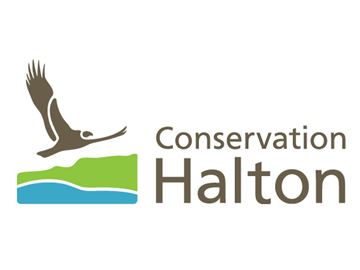Conservation Halton is hoping that a review of the Conservation Authorities Act will silence critics who accuse the agency of misusing its powers.
The Ministry of Natural Resources and Forestry (MNRF) recently announced a review of the roles, responsibilities, funding and governance of conservation authorities (CAs) under the Conservation Authorities Act (CAA). According to the ministry, the demands placed on the province’s resources have multiplied since the act’s inception in 1946. This has led to a system of management that has grown “increasingly complex” between the Province, municipalities and the CAs.
Ken Phillips, chief administrative officer for Conservation Halton (CH), said it’s time the Province provides some clarity for its resource management strategy to educate people on the responsibilities of Ontario’s 36 CAs.
“Some people think we are just a regulator and they aren’t popular. It’s the same as someone getting a ticket for speeding, a parking ticket. No one likes the person who has the power to be a regulator, but we’re doing our job.”
A local organization that manages and protects the environment and natural resources, CH’s jurisdiction spans 1,000 square kilometres of land, 17 creeks, 26 kilometres of Lake Ontario shoreline, forest cover and 80 kilometres of Ontario’s Niagara Escarpment. A contentious power, CAs can control whether a developer can build on an environmentally sensitive chunk of land, even if it’s privately owned. It can also hold up to the process for homeowners, who at times, need a permit from CAs before commencing renovations.
“Critics say we are overreaching our bounds, not acting within our jurisdiction…we’re doing our job – to protect the environment and protect human life and property,” said Phillips.
The list of responsibilities that falls under the jurisdiction of CAs continues to grow. For instance, Lake Ontario shoreline management and the Lakes and Rivers Improvement Act have been delegated to CAs, along with a more active role managing invasive species.
“As the resources shrank at the ministry, conservation authorities were there to pick up the things they weren’t capable of doing anymore,” said Phillips.
In addition, CAs handle reforestation, flood control, floodplain management, fish and wildlife habitat, water quality monitoring, rural drainage, stream flow monitoring, tourism, municipal plan review, wetlands protection, watershed strategies and erosion control, to name a few.
Burlington Liberal MPP Eleanor McMahon, parliamentary assistant to Bill Mauro, Minister of Natural Resources and Forestry, has been mandated to review the CAA. In a press release, she recognized the importance of CAs in “ensuring Ontario remains the beautiful, healthy and green province that it is.”
“As pressures on our environment increase, we need to ensure that this valuable tool is modernized,” she said.
Phillips said one thing that would help with modernization is money. In 1996, Ontario cut transfer payments administered by the MNRF to CAs across Ontario from $40 million to $7.6 million. The next year, the ministry committed to 50 per cent funding with municipalities for eligible programs, estimated to be $34 million. To date, this funding has not been provided, with the exception of the Water Erosion Control Infrastructure program.
In 2013, municipal levies accounted for 48 per cent of CA revenue, while self-generated revenue was 40 per cent, provincial funding was 10 per cent and federal funding was two per cent.
“I would hope that more funding options would open up, but I don’t think it’s going to happen,” said Phillips.
The Conservation Halton chief administrative officer’s biggest hope is that the review will clarify the responsibilities of CAs to make sure everyone knows they’re doing exactly what they’ve been delegated.
And with a land use planning review of four pieces of legislation aimed at protecting the environment currently underway, the timing’s right, said Phillips. The legislations include the Greenbelt Plan, Niagara Escarpment Plan, Oak Ridges Moraine Conservation Plan and the Growth Plan for the Greater Golden Horseshoe.
Mauro, the Minister of Natural Resources and Forestry, said the review would take into consideration comments from the public, municipal partners and other stakeholders.
“Our government recognizes the importance of managing key natural resources to meet the current and future needs of Ontarians,” said Mauro.
A discussion paper has been posted for public consultation. It represents the first step in the ministry’s review. Feedback will help identify priority areas for the review and produce a range of perspectives on how to improve the current resource management framework.
To access the discussion paper or comment online, please visit the Environmental Registry at http://www.ebr.gov.on.ca/ and search for EBR Registry Number 012-4509 or “Conservation Authorities Act.” Deadline for submission is October 19.




